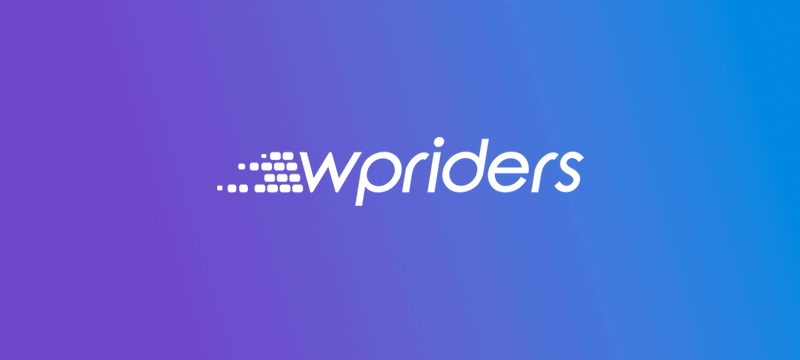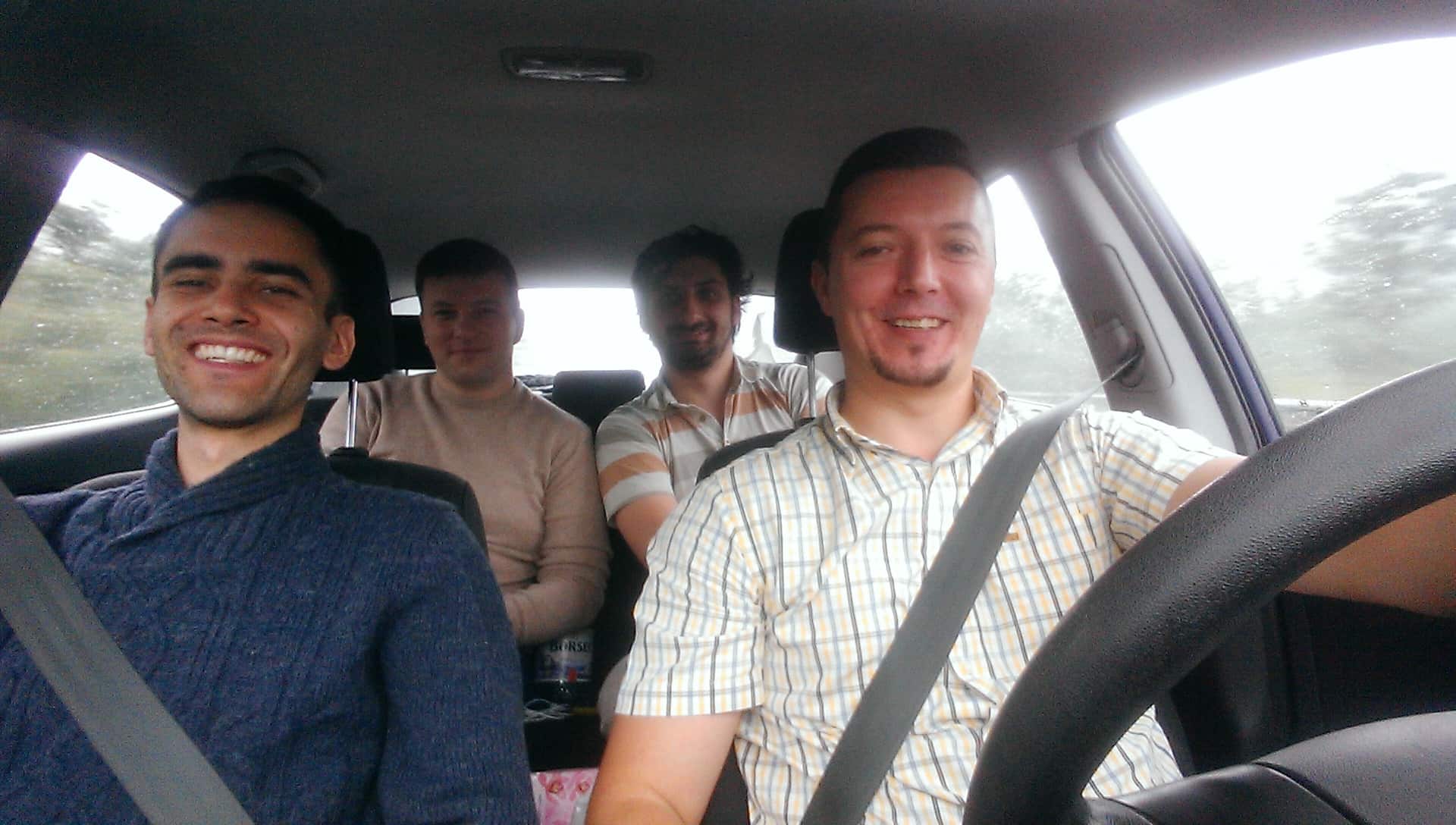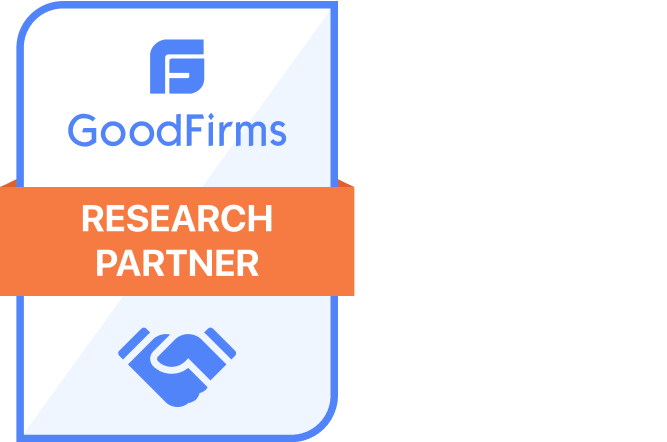Here’s a transcript of my presentation at WordCamp Bucharest. I used www.fiverr.com to get a pretty good text.
Moving from software products to WordPress services
Transcript
Marius Vetrici: Good late morning. Was the coffee fine? Did you like it?
Participants: Yes.
Marius Vetrici: I’m going to speak in English for obvious reasons. Before going to my today’s topic, I would like you to raise your hand, those of you that have ever developped a product. Great. More than half of the room. Now, I would like you, those of you to raise hand that have ever provided WordPress services. Oh, less people. That’s interesting. Now, one more try. I would like you to raise your hand those of you that are waiting to hear today the success story about what it takes to launch a successful product.
Participant: Yeah.
Marius Vetrici: Guys, I’m sorry you’re all in the wrong room here. I’m not going to talk about that. However, I’m going to talk about what it takes to launch a product but it’s going to be a personal perspective. I’ve been working for 10 years. I have launched four products. And my first conclusion is that building a product can be incredibly boring. Why? Why do I think that? How many of you are in a personal relationship which is older than three years old, married or… OK. So the first year is like a honey year. The second year is like you are getting to the reality, you land. The third year you accommodate. And there’s even a book, Love’s Three Year book or something like this. And after three years old, love is a verb. Love is not reactive it’s proactive.
This is what I think about product development. You need to be really proactive in order to make it fun, to continue to make it fun. Also, from my personal perspective, it was and it is a very risky endeavour. And also the numbers show that it’s like in IT tech start-ups, only 37% of the companies made it pass 4th year of life. More than 60% they just died for the 4th year. And the numbers are even more staggering when we talk about product launching start-ups. Did you know that nine out of 10 start-ups that launch products failed according to Neil Pattel data? Did you know that? So, in my opinion, it is risky but it can be incredibly boring.
Now, there are some positive outcomes out of launching and building a product. It is really instructive and profound. It’s like in a long-time relationship. If you invest in that relationship and if you are self-aware of your decisions, of what you are doing, of how you are managing your company and your product, you will make mistakes, however, you have a chance to learn. The longer the relationship, the deeper you will go into the details and inside of self. This is exactly with the product. I’ve learned to build products and scalable architectures. I learned what it is, what does it mean to build a scalable product and a modular product so that we can easily extend it.
Now, this is to learn to build software the right way. It’s like, shooting with a cannon, if you shoot on a short-range, that’s fine. Two degrees of error, oh, no deal. But if you shoot a few kilometres away, a half degree of error can translate in 2 kilometres error. This is how it happens with software. If you choose the wrong technology, you will end up in the wrong area.
I’ve also learned to provide support, to organize the support, to classify the tickets, to handle complaints and they’re leading me to how to talk and to listen to customers that are not that happy. So, all that can only be learned I think only from working on a long-term product while you are involved in a long-term relationship.
A bit of background, I’ve been building ASP.NET controls back in 2004. I’ve worked on two of them and date T– Date Time Picker and Menu Control for visualstudio.net. Then I’ve been working for 10 years on this Inventory Management and POS software for Romanian market. Those two web for international market. We’ve managed to have more than 100 sales of that two products. But we’ve worked on that for more than one year.
SoftMentor, 10 years, about four sub-products, a lot of things to tell you about but I’m going to more on these later. And I also tried– that was for the Romanian market, and this one was– was, yes, it ends in 2013. It was a large scale Document Management and Workflows platform. It has been used for the Romanian Ministry of Finance for two years. They used it for electronic registry. Two American banks used it but we had to just shut down.
Currently, I’m using everything I had learned in WordPress Riders, WPRiders Agency, luckily still present day and more days to come. We’re doing WordPress hard core development with a focus on business goals. So, what kind of things I’m doing differently in 2016 after more 10, after 10 years of building products?
First of all, I learned what it means to focus. As an entrepreneur you’ve got to do a lot of other things and the big challenge– OK, we need to focus. We need to focus. Have you ever heard that? We need to focus. Guys, we need to focus. The problem is that today we focus on one thing, tomorrow we’re going to focus on another thing and the day after tomorrow we’ll focus on a third thing and so on. Now, in order to achieve focus, you need to learn to say no. And that is to sacrifice. And as one smart guy says focus without sacrifice is destructive. When I say sacrifice, I’m thinking about two things. Sacrifice features and sacrifice verticals. This is from personal experience.
So, when I talk about features, with our inventory management software we had a 300 pages user manual, so a lot of features and a 20 pages configuration manual with one line configuration parameters, 20 pages. Nobody knew them by heart. So you can imagine that was a huge, huge software for very small companies. That was one of the problems. So what I will do that I am doing differently nowadays is just saying no. Let the customer feel the pain before I decide to actually go on and implement the feature.
And second, sacrifice verticals or with our inventory management software we had around 600 clients. Now, one day I decided to count the verticals that I have. What do you think? Did I have 10, 20? 40, 4-0 verticals, 4-0 different types of companies I was serving. That was absolutely crazy. When I saw that, it became clear to me why do I need so many configuration parameters. So I was doing everything for everyone. Well, it didn’t work.
So, sacrificing verticals and features will boil down to product-market fit. It’s that really hard thing to do, really hard thing a product manager has to do. It’s like when you choose your market that has a demand for your features. So, you have to constantly balance the features. You decide to say yes and to build with the market that has demand. And, when I say demand, I mean clients, paying clients that have money in their pocket and they are willing to pay those money to you right now. We are not Coca Cola to educate the markets. We don’t have those kinds of budgets, in my opinion.
Now, what else would I do differently in order to achieve product-market fit? But first of all, I will stop doing that much customer support. I would start – because that’s reactive. It’s fine that it’s reactive. I will start talking to clients proactively. I will just go to their office, I’d observe them how do they work, let’s say for our document archival software, I will just go and take my laptop for a few days and sit there and observe and take notes, how do they work and then I will just ask them what are your pain points? And I will just focus on those.
And second, what I will do differently, I would enforce new traction alongside product development. How many of you are aware of this term, traction? Thank you. I won’t go deep into details. Traction is actually a book title and traction means a manifestation of interest for your product. It’s more than just demand because when you say demand it’s like people are going to buy the product. Traction is more than that. Traction is interest for your product. You can measure traction in various ways but what is important is to set KPIs if you want to track traction.
So you can keep track of the number of signups on your newsletter that’s fine. You can track free downloads of your feed or plug-ins or your application. You can track the number of visits. It’s your number, you choose it. However, if you could decide, this is what we didn’t do. You need to choose a number and to stick to it and to– it’s like do not drop the goal, keep the eye on the goal, keep the eye on the goal every time, every day. So, set your KPI for traction and then set your targets. That’s very important. You need to break even. And you need to choose that KPI that will take you, if that KPI goes up, it will take you beyond break even. Do you know what’s break even? It’s that moment when your incomes surpass your cost. So basically it’s the moment when you have your profit. Below that threshold, you’re losing money.
OK, if targets are not hit repeatedly, fail fast. Unfortunately this fail fast cost me a lot of money. It’s like we spent more than 200,000 Euros to build these products in two years and I think like I would have paid 3 MBAs, very expensive MBAs with those money. So fail fast it’s an expensive lesson for me I hope you will have the nerve to cut it sooner if it doesn’t go in the right direction.
Now, another thing that I love about and I like about our community and about current business model is the open source phenomenon. And I even call it open source family. As an agency, we’ve gained so much knowledge, know-how snippets, plug-ins, themes, ideas out of thin air, out of community that we are just willing to pay it back and, maybe to pay it forward, and that’s why beyond economical reasons and usefulness of those resources is just nice to give back and we have a policy, we share as much as we can of our work just to help others not lose their time in looking for solutions. So comparing to the past technologies that we’ve used it’s like a blessing. Being part of this community and being part of the overall open source family.
Now, I’m not going to talk about the tools or development tools we are using in our agency, I’m sure there are a lot of developers out here. However, I would like to share with you a few of the tools and processes we use in order to better organize ourselves as an agency. Those are lessons learned back from building products and managing details and questions from clients and stuff like this.
So, first of all, we use Asana. Although Asana is a collaboration tool, we are using it– it’s at least, this is our vision we are using it to manage commitments. Whenever we promise something to a client, if it’s either a deadline or a feature or something to fix, we note it down and we make a special– we put a special focus on managing commitments, on sticking to our words.
Then we use Harvest. Time is our most precious number one resource we are selling at this moment, the ultimate resource. And that’s why we use Harvest. We need to see where the time goes and we need to learn from past projects in order to improve our estimates. We are also using Harvest Forecast to plan our workload in advance. It’s like a calendar for developers is really, really useful.
No business will go forward without proper planning. While I was building products I had absolutely no kind of sense of budgeting, money spending, etc. Do we have money? Yeah, it looks like I have money. OK, let’s spend that. And then at the end of the month, oh, we have these new invoices. But we have an accountant. So what? Hi, join in.
I discovered this little thing called You Need a Budget. There are thousands of budgeting tools, however, what I specifically like about this one is that it comes with four very healthy principles. And I’ll only go into the first one which is Live on Last Month’s Income. What is that? It help us a lot to, as an agency, to build a healthy cash flow and financial status.
Living on last month’s income is like if you earn $10,000 in September, I will budget all my expenses in October from the incomes from September. So I’m not going to spend more than $10,000 in October. And every month it’s like this. It sounds obvious but I’m not sure how many of you are doing this or I used to use the old accounting method when I forecast what I’m going to gain in October and I spend the money in October, I spend real money and instead I’m only, I have a wishful thinking, oh, I’m going to make that kind of money in October. No, in October, I’m spending the money that I earned in September. And this is really useful to check things like that. The other principles you can find on the website.
Now, we are doing fine as an agency, however, there are disadvantages in our business model. We lack recurring revenues at this moment. At this moment, we don’t have recurring revenues, we have recurring projects, recurring customers. Now, what I’m thinking about is to setup productized services. There’s a nice guy called Brian Casel and I’m going to quote him, “A productized service is a pre-packaged set of services for a specific scope at a fixed price.” And then you can save up in selling these productized services.
OK. Future plans, recurring revenues, ongoing maintenance plans, retainer development and other ideas. A few resources for you here. And just to wrap up, quickly to wrap up the differences between the two models. So, fun, in providing services, it’s variable all the time because you can have projects interesting, then maybe not so interesting, interesting, not so interesting. It’s kind of variable, that’s fun. Building products, it goes high, medium, it goes down, fun.
Profitability, relatively constant medium to high. In product building, profitability is very high but if you, if you make it. The same for recurring revenues, very high but after break even. Recurring revenues in providing services is medium, yes, for productized services. In our case, it’s close to zero. Workload with spikes in building products companies and start-ups, the workload is very high. I know a lot of start-ups that are working overnights, long hours et cetera.
Need for marketing, mistakes, very high impact. And I’ve already talked about it. The cannon if you make a mistake, you’re going to miss 2 kilometres. Need for marketing, very high and constant. You need to build traction alongside with your product. In services, you go to a conference, you can do business development. It’s a different story. And risk of failure, as now will show very high and here is medium to low.
This being said, I would like to thank you for your attention.
[Applause]
And I’m waiting for your questions.
Participant: Hi, I actually have two short questions.
Marius Vetrici: Of course.
Participant: You mentioned the fact that you need to fail fast. Now, I agree with that. I run by the same principles. My question is how do you know when you’re done failing?
Marius Vetrici: When you’re done failing?
Participant: Yeah.
Marius Vetrici: You decide that. A failure is a decision in my perspective.
Participant: OK. OK.
Marius Vetrici: The failure is when you stop.
Participant: OK. The other question is you mentioned at about halfway into your presentation the fact that you have like 100 customers or 100 sales with two companies.
Marius Vetrici: With two products.
Participant: With two products, OK.
Marius Vetrici: ASP.NET, yeah.
Participant: What you recommend better: 10 million customers with 10 million sales with $1 each sale or one client with a $10 million contract?
Marius Vetrici: I prefer the first, I personally prefer the first variant because it’s more stable it’s like you have many legs, if you only have one leg, one-day things change, one day you can lose it. And then you’ll lose the entire structure, team whatever. OK?
Male Speaker: Any other questions?
Marius Vetrici: Ready for more. OK? Yes.
Participant: Hi, Sebastian from [Indiscernible]. As I looked at your website, I saw that you’re offering mostly services so not necessarily building websites from scratch. And the question was regarding how will you charge for these? Because from our experience, we charge on an hourly basis. And I wanted to know if you have like a price table that you have probably setup or if you make an evaluation for a certain project and then set the prices for let’s say an hour or…
Marius Vetrici: OK. Thanks for the question. We have several approaches, of course. If the project is crystal clear, we just give a fixed point estimate and then we go ahead. We absorb the risks. That’s fine. But we do this when we know we can do this. Second, if the client is willing to work by time sheets which is pay us an hourly rate, we just work and provide the time sheets we’ve worked with what has been done.
And the third approach is to setup a discovery phase with the client with some fixed price thing like eight hours of work and without telling him that it’s going to be eight hours of work. Just giving them a fixed amount and I promise to deliver an evaluation, a report and a solution for getting that thing. And that report would be reusable. This is a keyword for the client. He will be able to take that report to any other agency and get a good quote based on that report, so discovery phase. And mainly these are our approaches.
Of course, if we are building– we have a few websites built from scratch, from zero to onwards and we are doing just a study board to describe the process, charge for wireframes, design, coding and then deployment separately. And I’m just giving the client like OK, briefing them, wireframe is a fixed price, that’s pretty clear. But then the design is going to be between and between and then coding between and between and they ask why? Because this number, this figure will depend on what you will ask me to build you on the previous set and this one and the previous set and so on. And the deployment we never know what we can find in that server. So, if it’s a well-known vendor or hosting, that’s fine, otherwise, if it’s a VPS, you never know what you’ll find in there, so we need to check the server. I hope this answers your question.
Participant: Great.
Marius Vetrici: OK?
Participant: You mentioned setting KPIs. You mentioned setting KPIs and my question would be how do you– so what’s the process for identifying those good KPIs and which of those that we– so how do you identify which of those even are worth tracking?
Marius Vetrici: Nice question. You know I’ll give you a short answer. And a very detailed answer you’ll find in my first resource here is Traction book. First of all, you need to brainstorm. In the Traction book you’ll find an entire framework. It’s called bull’s eye for choosing the right KPIs. But mainly, you brainstorm, you play with Excel and you round everything in profits, I mean you link that KPI to money, to profits and then you simulate and you’ll see that if that KPI will go up, will your income and profit go up? If yes, yes. It is a good candidate for tracking. If not, choose another one.
And another thing to keep in mind from Traction book is that KPI will change from stage to stage so things that brought you to one level will not take you further so you need to adapt and to find new traction channels and new KPIs. So, basically, brainstorm and simulate.
Participant: [Multumim foarte mult, Marius] Thank you very much, Marius.
Marius Vetrici: Thank you [Va multumesc si eu].









